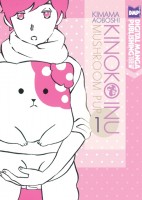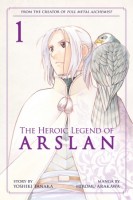 Creator: Takako Shimura
Creator: Takako Shimura
U.S. publisher: Fantagraphics Books
ISBN: 9781606997505
Released: August 2014
Original release: 2007
The wait between the release of each new volume of the English-language edition of Takako Shimura’s manga series Wandering Son can seem torturous, but without fail I’m exceptionally glad when the next installment is finally available. Wandering Son is a manga that is personally very meaningful to me, so I’m always a little worried that Fantagraphics won’t be able to complete the series, which would be a shame. Fantagraphics’ edition of Wandering Son is beautiful, complete with color pages and hardcover binding. Wandering Son, Volume 7 was originally published in Japan in 2007 while Fantagraphics’ English translation by Matt Thorn was released in 2014. The series concluded in Japan with the fifteenth volume, which means that the English-language release has just about reached the midway point of Wandering Son. I sincerely hope the rest of the series will be able to be published, too.
The seventh graders’ production of a gender-swapped Romeo & Juliet for their school’s cultural festival is over, but there doesn’t seem to be any end in sight for the drama unfolding in the classroom. Although a few of the students were dissatisfied with their own parts and performances, the play was generally well received, resulting in the theater club attempting to scout some of the best talent. This does cause some tension as the members of the various school clubs shift around to follow their personal interests, leaving friends behind in the process. Some friendships are being severely tested while other, more antagonistic, relationships appear to be on the mend. As Shuichi, Takatsuki, and the others grow and mature, their connections to one another change and evolve, too. Puberty continues to progress as well, bringing with it unwanted changes, anxieties over developing bodies, and concerns over physical appearances. What to wear, what not to wear, acne, and skin problems are all legitimate worries, providing opportunities for both teasing and bonding.
Wandering Son is told in a somewhat non-linear, almost fragmented sort of way. Shimura takes individual moments and memories, often from different points in the characters’ lives, and then layers them together, drawing connections between the separate pieces that would not necessarily have been obvious otherwise. This makes it easier for readers to see that the characters, though they all have their own unique perspectives and individual experiences, are dealing with some very similar issues. Their approaches to those issues and how they deal them are often quite different, though. This layering and revealing of parallels, as well as the other narrative and storytelling techniques that Shimura uses, are very effective in building on some of the themes that Wandering Son explores—namely personal identity—by exhibiting the depth and nuance of the series’ sensitive portrayal of the characters as individuals. The realism and authenticity of the characterization in Wandering Son is one of the manga’s greatest strengths.
Another related aspect of the manga that is handled particularly well is the natural changes in the characters’ relationships with one another. Wandering Son has a large cast of both primary and important secondary characters and it’s a close-knit group. When something happens between two of the members, the social dynamics of the entire circle is influenced. Major developments occur when Shuichi and Anna begin dating, helping to trigger some unexpected changes in Chiba and Takatsuki’s relationship which were particularly interesting to see. Chiba is incredibly self-centered and at times exceptionally unlikeable, but she’s also perceptive and seems to be very sure of herself and who she is. Takatsuki, on the other hand, is still working all of that out but is fiercely determined in other ways. It’s because of Takatsuki’s persistence, despite Chiba’s prickliness, that their friendship has a chance of improving—something that everyone would be happy about. It won’t be an easy process, though, and will take some time. Wandering Son excels in capturing the real-life messiness of relationships.










